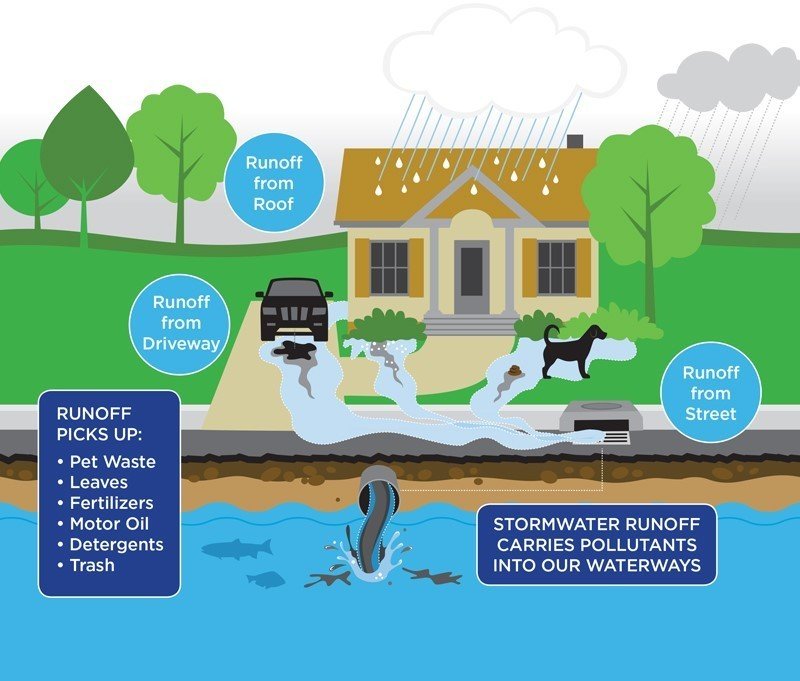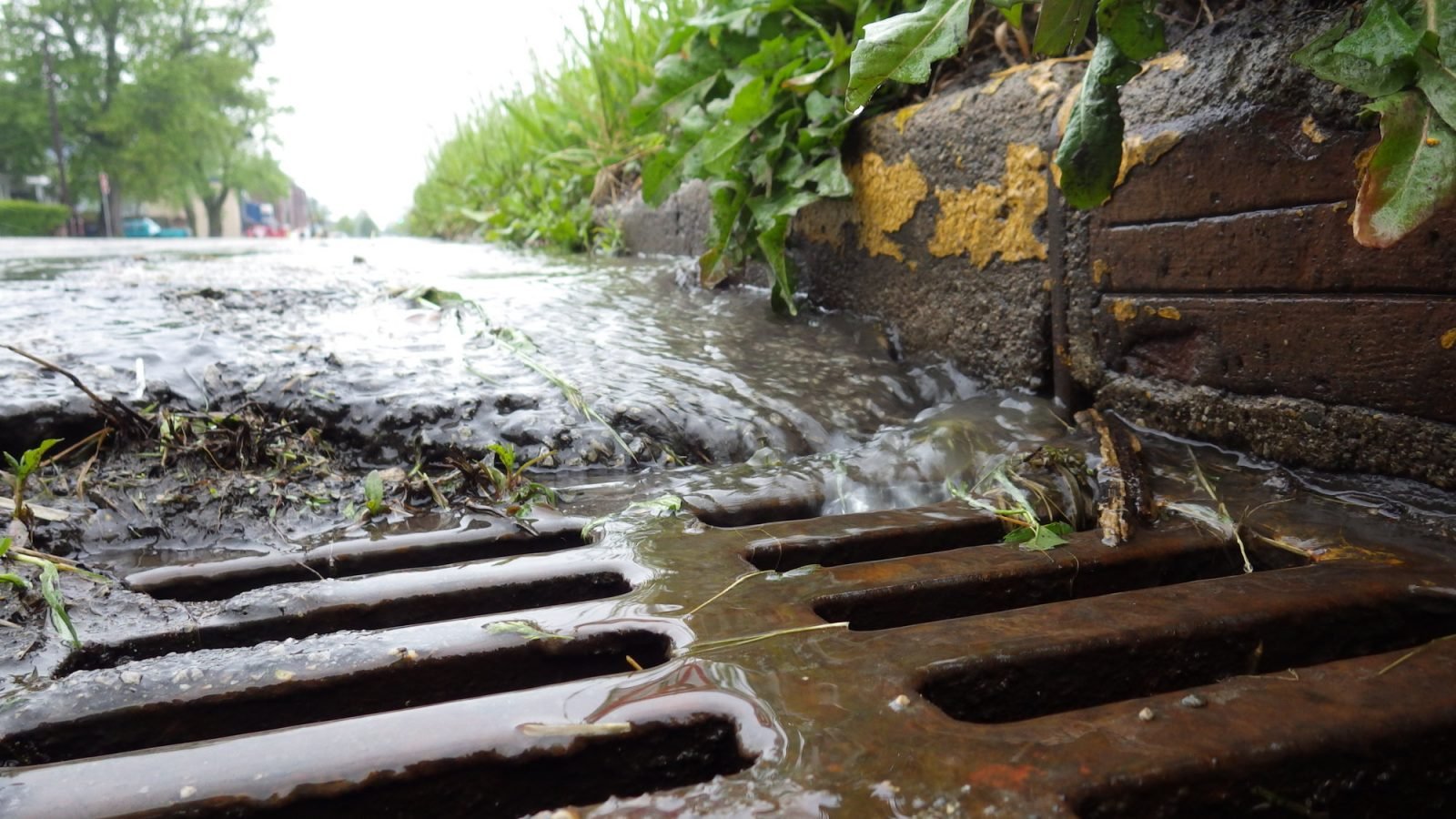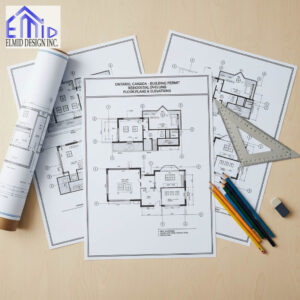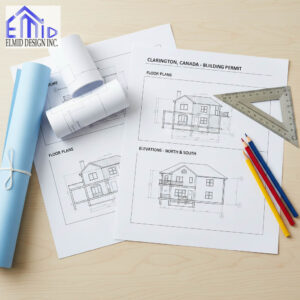Effective Stormwater Management Strategies are key for sustainable cities. This guide outlines essentials in the stormwater management report and its impact assessments, ensuring environmental compliance in urban development.
Introduction
Stormwater management reports play a pivotal role in ensuring sustainable development by addressing the crucial aspect of stormwater control. As urbanization and development escalate, so does the need to effectively manage stormwater runoff, which can pose significant environmental threats if left unchecked. Stormwater management reports provide a comprehensive framework for assessing stormwater impacts, developing mitigation strategies, and ensuring compliance with regulatory requirements.
Understanding Stormwater Management Concerns
Stormwater runoff, the non-absorbed portion of rainfall that flows over impervious surfaces, can lead to environmental issues. Unmanaged stormwater can:
- Contribute to flooding: Excessively high stormwater volumes can overwhelm drainage systems, leading to localized flooding.
- Erode soil and degrade water quality: Stormwater often carries sediments, pollutants, and debris, impairing the quality of water bodies and harming aquatic ecosystems.
- Increase infrastructure costs: Flooding and erosion can damage infrastructure, such as roads, bridges, and buildings, leading to costly repairs and maintenance.
Purpose of a Stormwater Management Report
Stormwater management reports are critical for addressing these concerns and promoting sustainable development practices. Their primary objectives include:
-
Assessing Stormwater Impacts: These reports evaluate the potential impacts of a proposed development or project on stormwater quantity and quality. They analyze site conditions, drainage patterns, and soil properties to determine the extent of stormwater runoff and potential pollution risks.
-
Developing Stormwater Management Strategies: Based on the assessment findings, stormwater management reports outline strategies to mitigate stormwater impacts. These strategies may include implementing stormwater best management practices (BMPs), such as bioretention basins, rain gardens, and permeable pavements, to reduce runoff volume, filter pollutants, and replenish groundwater.
-
Ensuring Regulatory Compliance: Stormwater management reports are crucial in demonstrating compliance with environmental regulations and obtaining necessary permits. They document the proposed stormwater management plan and its adherence to relevant guidelines and standards.
Key Components of a Stormwater Management Report
A comprehensive stormwater management report encompasses several key components:
-
Project Overview and Site Description: This section provides a detailed overview of the project, including its location, purpose, and physical characteristics of the site. It also outlines the project’s land use, drainage patterns, and soil types.
-
Stormwater Hydrology Analysis: This section presents a thorough analysis of the site’s stormwater hydrology, including rainfall patterns, runoff volumes, and peak flow rates. It utilizes various methodologies, such as the Rational Method and the Soil Conservation Service Curve Number (SCS CN) method, to estimate stormwater runoff volumes and peak flows.
-
Stormwater Management Plan: This pivotal section outlines the proposed stormwater management strategies, including the selection and design of BMPs. It details the location, sizing, and construction specifications of the BMPs, ensuring they effectively address the site’s stormwater challenges.
-
Maintenance and Monitoring Plan: This section outlines the procedures for long-term maintenance and monitoring of the implemented BMPs. It specifies the frequency of inspections, maintenance activities, and recordkeeping procedures to ensure the continued effectiveness of the stormwater management system.
The Significance of Stormwater Management Reports
Stormwater management reports hold immense significance for both the environment and sustainable development:
-
Protecting Water Quality and Aquatic Ecosystems: By mitigating stormwater pollution, these reports contribute to safeguarding water quality and protecting aquatic ecosystems from harmful pollutants and sediments.
- Preventing Erosion and Flooding: By controlling stormwater runoff volumes and velocities, these reports help prevent erosion, which can damage property, degrade soil quality, and contribute to sedimentation in waterways. They also minimize the risk of flooding, protecting communities from property damage, infrastructure disruptions, and potential safety hazards.
-
Enhancing Property Value and Aesthetics: Well-designed stormwater management systems can enhance the aesthetic appeal of a property, integrating seamlessly into the landscape while effectively managing stormwater. This can increase property values and attract potential buyers or tenants.
-
Promoting Sustainable Urban Development: Stormwater management reports play a crucial role in fostering sustainable urban development by addressing stormwater challenges and promoting sustainable practices. They contribute to creating healthier, more resilient, and environmentally friendly communities.
Elmid Design Inc.’s Expertise in Stormwater Management Reports
Elmid Design Inc., a leading provider of engineering and consulting services, is committed to providing expert guidance in stormwater management report preparation. Our experienced professionals have in-depth knowledge of stormwater hydrology, drainage design, and best management practices.
Elmid Design Inc., certified by PEO, specializes in Stormwater management Reports in Toronto, Vaughan, Markham, and GTA cities. Our P.Eng team delivers comprehensive solutions across Richmond Hill, Oakville, and beyond.
We offer comprehensive services, encompassing:
-
Thorough site assessments and stormwater impact evaluations
-
Development of customized stormwater management plans
-
Selection and design of effective BMPs
-
Preparation of detailed stormwater management reports
-
Compliance with regulatory requirements
Case Studies: Elmid Design Inc.’s Stormwater Management Successes
Elmid Design Inc. has a proven track record of delivering successful stormwater management solutions for a wide range of projects, including:
Project 1: Residential Development Stormwater Management Plan
For a new residential development, Elmid Design Inc. prepared a comprehensive stormwater management report that assessed the site’s hydrology, evaluated potential impacts, and outlined a plan incorporating bioretention basins, rain gardens, and permeable pavements. The implemented stormwater management system effectively mitigated runoff, reduced pollution, and enhanced the development’s aesthetic appeal.
Project 2: Commercial Site Stormwater Drainage Design
Elmid Design Inc. designed a stormwater drainage system for a commercial site expansion project that efficiently conveyed stormwater runoff away from the site while minimizing erosion and preventing flooding. The system utilized a combination of swales, detention ponds, and infiltration trenches to manage stormwater effectively.
Project 3: Municipal Stormwater Mitigation Strategies
Elmid Design Inc. developed a comprehensive stormwater mitigation strategy for a municipality facing stormwater-related challenges. The strategy included a thorough assessment of the municipality’s drainage system, identification of critical problem areas, and recommendations for implementing BMPs and infrastructure upgrades. The strategy has proven instrumental in reducing flooding, improving water quality, and enhancing the municipality’s stormwater resilience.
Geographic Locations That We Service:
Our Licensed Professional Engineers specializing in Engineered Stormwater Management report offer the best Engineered erosion control plan, lot grading and drainage plan to obtain site plan approval and building permits in Ontario, including:
Toronto and Surrounding Areas
In the vibrant heart of Ontario, we service Toronto (City of Toronto) and surrounding areas. Additionally, we cover Oshawa (City of Oshawa), Pickering (City of Pickering), and Clarington (Municipality of Clarington). Furthermore, our expertise extends to Ajax (Town of Ajax), Whitby (Town of Whitby), Brock (Township of Brock), Scugog (Township of Scugog), and Uxbridge (Township of Uxbridge).
Halton Region
Moving to the Halton Region, our services encompass Burlington (City of Burlington) and Halton Hills (Town of Halton Hills). Also included are Milton (Town of Milton) and Oakville (Town of Oakville).
Peel Region
In the Peel Region, we provide services in Brampton (City of Brampton), Mississauga (City of Mississauga), and Caledon (Town of Caledon).
York Region
Our services in the York Region cover Vaughan (City of Vaughan), Aurora (Town of Aurora), and East Gwillimbury (Town of East Gwillimbury). We also cater to Georgina (Town of Georgina), Markham (City of Markham), Newmarket (Town of Newmarket), Richmond Hill (City of Richmond Hill), Whitchurch-Stouffville (Town of Whitchurch-Stouffville), King (Township of King), and Bradford-West Gwillimbury (Town of Bradford-West Gwillimbury). Each municipality here offers a distinct setting, requiring our specialized approach.
Other Southern Ontario Cities and Towns
We also serve many other cities and towns in Southern Ontario. These include Hamilton (City of Hamilton), St. Catharines (City of St. Catharines), Niagara on the Lake (Town of Niagara on the Lake), Brant (County of Brant), Cambridge (City of Cambridge), Kitchener (City of Kitchener), Waterloo (City of Waterloo), and Woodstock (City of Woodstock). Furthermore, we operate in Guelph (City of Guelph), Centre Wellington (Township of Centre Wellington), Shelburne (Town of Shelburne), Orangeville (Town of Orangeville), New Tecumseth (Town of New Tecumseth), Essa (Town of Essa), Collingwood (Town of Collingwood), Wasaga Beach (Town of Wasaga Beach), Barrie (City of Barrie), Midland (Town of Midland), Orillia (City of Orillia), Ramara (Town of Ramara), Minden Hills (Town of Minden Hills), North Kawartha (Town of North Kawartha), Kawartha Lakes (City of Kawartha Lakes), Peterborough (City of Peterborough), Selwyn (Town of Selwyn), and Brighton (Municipality of Brighton).
FAQs
What is the purpose of a stormwater management report?
A stormwater management report serves as a comprehensive guide for assessing stormwater impacts, developing mitigation strategies, and ensuring regulatory compliance for development projects.
Who needs to prepare a stormwater management report?
Developers, property owners, engineers, and municipalities involved in
Who needs to prepare a stormwater management report?
Developers, property owners, engineers, and municipalities involved in projects that alter the site’s hydrology or land use typically require a stormwater management report. These projects include:
- Residential developments
- Commercial developments
- Industrial facilities
- Road construction projects
- Land use changes, such as converting agricultural land to urban development
What are the key components of a stormwater management report?
The key components of a stormwater management report encompass:
-
Project Overview and Site Description:
Initially, this foundational section provides, firstly, a comprehensive overview of the project. It includes, importantly, its location, purpose, and the site’s physical characteristics. Furthermore, it outlines, in addition, the project’s land use, drainage patterns, and soil types. Subsequently, this comprehensive understanding of the site’s context lays, moreover, the groundwork for the subsequent sections.
Stormwater Hydrology Analysis:
Secondly, this meticulously crafted section presents, furthermore, a thorough analysis of the site’s stormwater hydrology. It delves, notably, into rainfall patterns, runoff volumes, and peak flow rates. Employing various methodologies, such as the Rational Method and the Soil Conservation Service Curve Number (SCS CN) method, it rigorously estimates, consequently, stormwater runoff volumes and peak flows. This detailed assessment provides, therefore, a critical foundation for developing effective stormwater management strategies.
Stormwater Management Plan:
Thirdly, this pivotal section outlines, furthermore, the proposed stormwater management strategies. It considers, carefully, the selection and design of BMPs. It details, meticulously, the location, sizing, and construction specifications of the BMPs, ensuring, as a result, they effectively address the site’s stormwater challenges. This comprehensive plan serves, therefore, as a roadmap for implementing sustainable stormwater management practices.
Maintenance and Monitoring Plan:
Finally, this crucial section outlines the procedures for long-term maintenance and monitoring of the implemented BMPs. It meticulously specifies the frequency of inspections, maintenance activities, and recordkeeping procedures, ensuring, consequently, the continued effectiveness of the stormwater management system. This proactive approach safeguards, therefore, the integrity of the implemented BMPs and their ability to protect the environment.
What are the benefits of a stormwater management report?
Stormwater management reports offer a multitude of advantages, including:
A detailed stormwater management report is vital for project compliance with environmental laws, and safeguarding water resources effectively. It covers numerous elements, including project summary, site details, hydrology analysis, management strategies, and ongoing maintenance and monitoring procedures.
Project Overview and Site Description
The initial section of the stormwater management report establishes the foundation for understanding the project’s context and the site’s characteristics. This section provides a detailed overview of the project, including:
-
Project Location: Clearly identify the project’s location, including street address, city, state, and zip code, to provide a precise geographical reference.
-
Project Purpose: Elaborate on the project’s purpose, outlining the intended land use and the specific activities or operations that will take place at the site. This information is essential for assessing the potential stormwater impacts of the project.
-
Physical Characteristics of the Site: Describe the physical characteristics of the site, including its size, topography, vegetation cover, and any existing drainage patterns. This information helps in understanding the site’s natural hydrology and potential challenges for stormwater management.
-
Land Use: Identify the existing and proposed land use classifications for the site, as different land uses generate varying amounts of stormwater runoff.
-
Drainage Patterns: Describe the existing drainage patterns on the site, including the direction of flow, major drainage swales, and any existing drainage infrastructure.
-
Soil Types: Identify the soil types present on the site, as soil permeability significantly influences infiltration rates and stormwater management strategies.

Stormwater Hydrology Analysis
This section delves into the quantitative assessment of stormwater runoff generation and behavior at the site. It utilizes various methodologies and tools to estimate stormwater volumes, peak flow rates, and concentration time. Key aspects of this section include:
-
Rainfall Patterns: Analyze historical rainfall data for the area to determine the frequency, intensity, and duration of rainfall events.
-
Runoff Volumes: Estimate the volume of stormwater runoff generated from the site for various design storm events, considering factors such as land use, impervious surfaces, and soil characteristics.
-
Peak Flow Rates: Calculate the peak flow rates of stormwater runoff for various design storm events, which are crucial for designing adequate drainage infrastructure.
-
Time of Concentration: Determine the time of concentration, which represents the time it takes for stormwater runoff to travel from the most distant point of the site to the outlet.
Stormwater Management Plan
This section outlines the proposed stormwater management strategies to effectively control and mitigate the impacts of stormwater runoff from the site. It encompasses selecting, designing, and implementing appropriate best management practices (BMPs). Key aspects of this section include:
-
BMP Selection: Identify and select appropriate BMPs based on the site’s characteristics, stormwater runoff volume and peak flow rates, and regulatory requirements.
-
BMP Design: Provide detailed design specifications for each BMP, including location, sizing, construction materials, and hydraulic calculations.
-
BMP Implementation: Outline the implementation schedule and procedures for constructing and installing the selected BMPs, ensuring adherence to design specifications and environmental regulations.
Maintenance and Monitoring Plan
This section ensures the long-term effectiveness of the implemented stormwater management system by establishing procedures for regular maintenance and monitoring. Key aspects of this section include:
- Maintenance Schedule: Initially, specify the frequency and timing of inspections and maintenance activities for each BMP. This is crucial for ensuring, consequently, the ongoing functionality of each component.
- Maintenance Activities: provide detailed descriptions of the maintenance activities required for each BMP, which includes cleaning, repairs, and vegetation management. This comprehensive detailing is essential for maintaining the system’s efficiency and reliability.
- Recordkeeping Procedures: Subsequently, establish procedures for documenting inspections, maintenance activities, and any observed issues or deficiencies. This step is critical for tracking the system’s performance and addressing, as needed, any arising challenges.
- Monitoring Plan: Finally, outline a monitoring plan to assess, over time, the performance of the stormwater management system. This plan should include, specifically, sampling and testing protocols for stormwater quality and flow rates, ensuring, thus, the system meets its intended goals.
How can Elmid Design Inc. help with stormwater management reports?
Elmid Design Inc. provides comprehensive stormwater management report preparation services, including:
- Thorough site assessments and stormwater impact evaluations
- Development of customized stormwater management plans
- Selection and design of effective BMPs
- Preparation of detailed stormwater management reports
- Compliance with regulatory requirements
Our experienced professionals have in-depth knowledge of stormwater hydrology, drainage design, and best management practices. We are committed to delivering effective stormwater management solutions that protect the environment and promote sustainable development.
Conclusion
Stormwater management reports are essential for dealing with issues related to stormwater and supporting lasting development. These reports offer a detailed plan for understanding impacts, creating solutions, and meeting rules and regulations. Elmid Design Inc. specializes in making these reports, helping customers achieve their project goals and promoting a healthy environment.
We'd love to hear from you
Get in touch with us
Tell us about yourself by completing the form below. Your information is always kept confidential.
Reach us through
-
13025 Yonge St, Unit # 201G, Richmond Hill, ON, L4E 1A5 - +1 647 745 4507
- info@elmid.ca
Send us a Message




